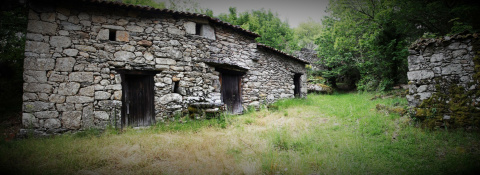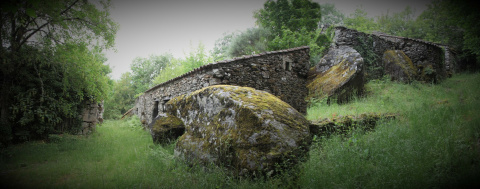
Sequeiros (Drying Houses) de Pena Folenche
Sequeiros (chestnut drying houses) are traditional structures with a single remarkable peculiarity: they are only occupied for two months of the year, during the months when the chestnuts are harvested with the first winds of autumn. The Sequeiros in Pena Folenche therefore served a twofold purpose, firstly to dry the chestnuts, and secondly, to house the labourers, most of whom came from the villages surrounding A Pobra de Trives: San Xoán de Río, Chandrexa de Queixa and Manzaneda.
You can get a much richer understanding of this extraordinary ethnographic group of wooded areas from the Pena Folenche viewpoint, which gives a stunning perspective over the vast forests of both stretches of the Navea Valley, between San Xoán de Río and A Pobra de Trives. We can start our journey there, along a dirt road surrounded by chestnut tree plantations, some set in authentic stone terraces, similar to those used for wine cultivation.
The chestnut drying process was intended to prepare them for storage. The first step entailed smoking the chestnuts on the wooden drying racks in the sequeiro, just below the cooking fire. Once they were dry, the next step was more expeditious: they were placed in a cloth sack and beaten against a hard surface, stone or stump, until the shells were separated from the chestnuts. Finally, the chestnuts were sieved in a basket until clean.
Sequeiros (Drying Houses) de Pena Folenche
Information and contact

Pena Folenche
A Pobra de Trives
Ourense
 Directions
Directions 


 What would you improve?
What would you improve?